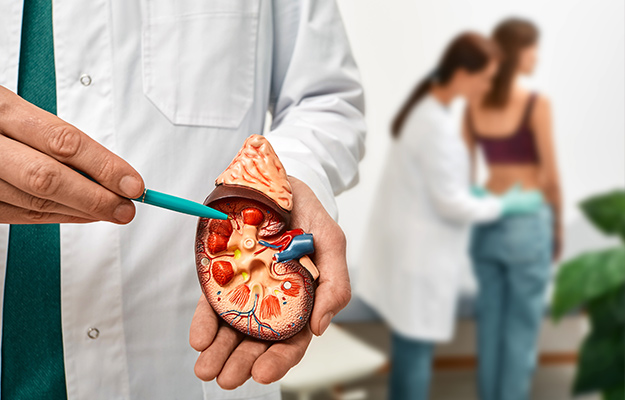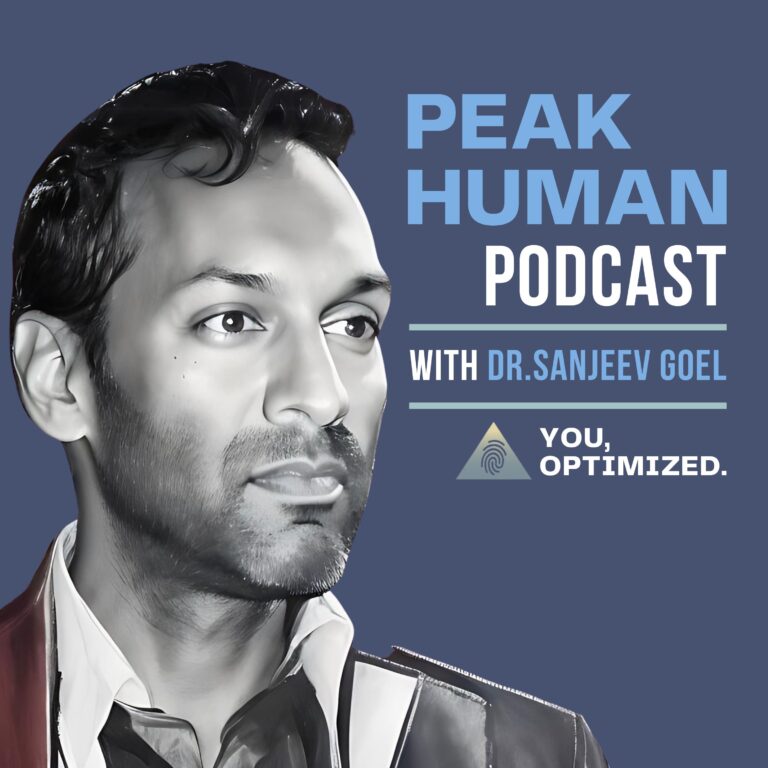Overview
Have you ever heard of chelation therapy?
It’s the treatment of choice proven to treat conditions related to heavy metal toxicity.
Yet, despite its effectiveness, chelation therapy is often overlooked and underappreciated. Many people falsely believe that the human body can get rid of heavy metals on its own, but the truth is that heavy metal toxicity is a serious and prevalent problem.
According to the World Health Organization (WHO), millions of people worldwide are affected by heavy metal poisoning annually – a “burden of disease,” as the health agency calls heavy metal poisoning.
This affliction is especially true for those regularly exposed to heavy metals, such as industrial workers and people who live near polluted areas. In 2019, lead poisoning alone was responsible for half of the 2 million lives lost due to chemicals.
At the end of the day, although chelation therapy is a brilliant way to remove toxins from the body, raising awareness about this treatment is crucial so that more people can benefit from its life-changing effects.
This article discusses chelation therapy, its mechanism of action, application techniques, benefits, and the risk factors you should know before starting a heavy metal detox.
Heavy Metal Detox: How Chelation Therapy Can Be an Antidote to Your Body and Mind
What Is Chelation Therapy?
Chelation therapy is a medical treatment involving chelating agents to remove heavy metals from the body, such as:
- Lead
- Arsenic
- Cadmium
- Thallium
- Mercury
Heavy metal toxicity is a severe health concern from exposure to various sources, such as contaminated air, water, food, and medical treatments.
While the human body can get rid of harmful chemicals on its own, the amount removed may not be sufficient, leading to the accumulation of toxic substances in the system.
Chelation therapy has been used to treat heavy metal toxicity for decades. Yet, it is also a part of treating other conditions, such as cardiovascular and neurodegenerative diseases.
Despite the effectiveness of chelation therapy, many people are unaware of its benefits, and some still believe that the human body can get rid of heavy metals on its own. Unfortunately, this misconception is extremely dangerous as heavy metal toxicity still exists no matter how hard our body tries to keep itself healthy.
How Does Chelation Therapy Work?
Chelation therapy uses chelating agents to remove metals from the body and restore health.
Chelating agents are organic or inorganic substances that can bind to metal ions, forming a complex that can be easily eliminated from the body through the excretory system.
The most common chelating agents are:
- EDTA (ethylenediamine-tetraacetic acid)
- DMSA (dimercaptosuccinic acid)
During the therapy, the chelating agent is administered into the body either intravenously (into a vein) or orally.
Once inside the body, the chelating agent travels through the bloodstream, binding to heavy metals and forming a complex. This complex is then eliminated from the body primarily through urine.
Chelation therapy can take several sessions, depending on the severity of the heavy metal toxicity. For example, 20 to 40 sessions are typically necessary for EDTA chelation therapy. Each session may last from 30 minutes to several hours.
Types of Chelating Agents Used in Therapy
EDTA and DMSA are the two primary chelating agents used in chelation therapy.
While they have similar mechanisms of action, some differences exist regarding their benefits, uses, and conditions they can treat.
EDTA Chelation Therapy
![]()
EDTA is a polycarboxylic amino acid that binds to heavy metals, including lead and mercury. It is administered intravenously and can remove heavy metals from the bloodstream.
Besides treating heavy metal toxicity, EDTA is effective in atherosclerosis, a condition where plaque builds up inside the arteries.
DMSA Chelation Therapy
DMSA is a sulfhydryl-containing compound. DMSA’s hydrophilic nature results in significant absorption in the gastrointestinal tract, hence administered orally.
It can remove mercury, cadmium, and arsenic and is often used to treat lead poisoning in children. DMSA is also used in the treatment of autism.
Which Is Better?
While EDTA and DMSA are equally effective chelating agents used in various heavy metal poisoning conditions, their uses and benefits differ.
EDTA is more effective at removing heavy metals from the bloodstream and is often used to treat cardiovascular conditions. Meanwhile, DMSA can also remove heavy metals from the body but must be taken shortly after exposure to avoid accumulation and toxicity.
Therefore, it is crucial to consult a qualified healthcare provider to determine which chelating agent is best for each case.
How Is Chelation Therapy Applied?
The procedure involves several steps, varying depending on the chelating agent used and the condition being treated.
Below is a step-by-step procedure for chelation therapy:
- Initial consultation: The patient meets with a healthcare provider to discuss their symptoms, medical history, and previous exposure to heavy metals.
- Diagnosis and assessment: The healthcare provider may perform a blood test or other diagnostic tests to assess the patient’s level of heavy metal toxicity.
- Chelating agent administration: Depending on the specific chelating agent used, it may be administered intravenously or orally.
- Monitoring: The patient is closely monitored throughout the chelation therapy session, which may take 30 minutes to several hours.
- Repeat sessions: Depending on the severity of the heavy metal toxicity, the patient may undergo several sessions, typically once a week.
- Follow-up: Patients may undergo follow-up diagnostic tests after the chelation therapy sessions to assess their condition.
Proven Benefits of Chelation Therapy
Heavy Metal Toxicity
According to research, fundamental principles of metal poisoning treatment deal with a step-by-step methodology, which is as follows:
- Prevention of further metal absorption into the system
- Elimination of metal from the circulation
- Inactivation of metal bioavailable in the system
Research also indicates that metal poisoning can be acute or chronic. Symptoms of acute poisoning are often evident, recognizable, and immediately treatable.
However, chronic metal toxicities may be poorly described as general illnesses and not identifiable as any conventional disease. Moreover, chronic toxicities may be irreversible, causing delayed or undetectable development of other conditions, like cancer.
Finally, research shows the first two steps of chelation methodology are more applicable for acute metal poisoning, while the last step is more prioritized for chronic toxicities.
When metal poisoning has become chronic, meaning the metal deposits have accumulated in the body for a long time, they have already been absorbed and circulated across various systems. Therefore, the prime concern of chelation therapy is to inactivate the bioavailability of the metal deposits, stopping their lasting impact on the body.
Cardiovascular Disease
According to a systematic review of chelation therapy in cardiovascular disease, repeated EDTA results in improvements in all four predetermined outcomes, including:
- Mortality rate
- Disease severity
- Plasma biomarkers
- Quality of life
Specifically, out of the 24 studies being reviewed (4 randomized, 15 prospective, and 5 retrospectives), 17 found improvements in cardiovascular outcomes after EDTA treatment. Also, studies with high rates of individuals with diabetes or severe occlusive arterial disease demonstrated the most significant benefits.
In 7 studies on patients with diabetes, retinopathy, or peripheral arterial disease (PAD), repeated EDTA infusions resulted in qualitative improvements in ulcer healing, vision improvement, and reductions in insulin dependence in patients.
In a similar study, individuals with intermittent claudication reported reduced rest pain and increased pain-free walking distance.
Most importantly, chelation therapy has shown efficacy in saving lives from metal poisoning. According to a case study investigating mortality after EDTA therapy, individuals receiving EDTA had a 2-year mortality rate of only 13% as opposed to those getting treatment without EDTA, having a cumulative death of 23.6%.
Neurodegenerative Disease
According to research, neurodegenerative diseases, such as Alzheimer’s, may result from complex gene-environment interactions involving metal neurotoxicity.
In other words, these conditions are caused by genetic risk factors and the pollutants in the living environment, including metal.
It is suggested that the metals in the environment, in the form of fine particles, activate the production of cytokines and reactive oxygen species (ROS) in the brain that, in the long term, damage the neurons (nerve cells).
Also, prolonged exposure to essential metals like iron and manganese might cause pathological conditions, such as neurotoxicity, due to poor homeostasis. This finding supports the theory that iron buildup may cause Alzheimer’s and Parkinson’s.
The impact is even worse for heavy metals, such as mercury, lead, and cadmium.
Mercury and lead, in a concentration-dependent manner, create a spike in amyloid beta (Aβ), one of the leading causes of Alzheimer’s. Meanwhile, the impact of cadmium on essential metals, gene dysregulation, interference with calcium, and other aspects of neurodegeneration have been found in human neural cells.
Experimental evidence suggests that 10 sessions of chelation therapy using 2 grams of EDTA once a week reduces toxic metals and improves the symptoms of neurodegenerative diseases. Moreover, follow-up treatment reduces the metal deposits in the patient’s body, often reaching physiologic or normal levels.
Also, oxidative damage, another cause of neurodegeneration, is alleviated using chelation therapy. The EDTA chelating agent can reverse endothelial damage and reduce the levels of ROS in the blood, suggesting its role as an antioxidant.
Risks and Side Effects of Chelation Therapy
While chelation therapy can be an alternative in certain medical conditions, especially when standard treatments are not working, it can come at a cost.
Possible Risks and Side Effects
- Hepatotoxicity or kidney damage: Chelation therapy can harm the kidneys, as the organs must work harder to clean up harmful metals and chelating agents. The risk of kidney damage increases with repeated treatments.
- Low calcium levels: Chelation therapy can lower calcium levels in the body as the chelating agents can remove the calcium deposits in muscles and bones, which can cause muscle cramps, bone marrow depression, and convulsions.
- Hypotension or arrhythmia: Chelation therapy can cause low blood pressure, irregular heartbeat rates, dizziness, lightheadedness, and fainting.
- Allergic reactions: Some individuals may experience an allergic reaction to the chelating agent, which can cause rash, itching, and difficulty breathing.
- Electrolyte and essential metal depletion: Chelation therapy can disrupt the balance of electrolytes and vital metals in the body, which can cause fatigue, weakness, and confusion.
- Pain at the injection site: Some chelating agents, such as the EDTA, can only be administered through injection, which results in better absorption but can be very painful at the injection site.
- Infections: Chelation therapy involves intravenous catheters, which can increase the risk of septicity.
Other Safety Precautions
It’s crucial to understand that chelation therapy should only be performed under the supervision of a qualified healthcare professional. Also, discuss potential risks and benefits with your doctor before this treatment.
Although the risks and side effects of chelation are dose-dependent and reversible after the completion of the therapy, taking a daily dose higher than the recommended 75 mg/kg could result in severe complications, including fatality.
Those with underlying diseases looking to take chelation therapy as an alternative treatment should be aware that this is not a first-line or recommended treatment for any other medical condition apart from heavy metal poisoning.
Finally, as of 2013, over 100,000 people in the United States had received an annual chelation therapy session. Nevertheless, less than 1% of these cases were under the supervision of qualified healthcare professionals.
Currently, there are only 11 FDA-approved chelating agents available for prescription chelation therapy, as follows:
- Edetate calcium disodium (calcium EDTA)
- Succimer (DMSA)
- Dimercaprol (BAL)
- Penicillamine
- Trientine hydrochloride
- Deferoxamine mesylate
- Deferiprone
- Deferasirox
- Pentetate calcium trisodium (Ca-DTPA)
- Pentetate zinc trisodium (Ca-DTPA)
- Prussian blue (Radiogardase)
Yet, many others are obtainable through compounding pharmacies and the internet.
These figures imply an immediate need to eliminate the misuse of chelation therapy and encourage the populations to take this therapy only with precautions.
References
Flora, S. and Pachauri, V. (2010). Chelation in Metal Intoxication. International Journal of Environmental Research and Public Health.
Wax, P. (2013). Current Use of Chelation in American Health Care. Journal of Medical Toxicology.
Fulgenzi, A. et al. (2020). EDTA Chelation Therapy in the Treatment of Neurodegenerative Diseases: An Update. Biomedicines.
Ravalli, F. et al. (2022). Chelation Therapy in Patients With Cardiovascular Disease: A Systematic Review. Journal of the American Heart Association.
If you have questions about chelation therapy or any health problems discussed here, connect with us and learn more.
At Peak Human, our team of healthcare professionals helps you reach your ‘peak’ health with a custom whole-person approach. Using the most cutting-edge, science-backed biohacking and aesthetic tools available today, we help you achieve the highest physical/cognitive performance state, improving your overall quality of life.
Don’t hesitate to contact us for questions or to book an appointment. Get personalized support and insight from expert physicians.
UP NEXT:
- How Precision Medicine Helps Prevent the Development of Heart Diseases
- What Causes Memory Loss & Ways to Prevent It
- What Are the 7 Stages of Dementia







